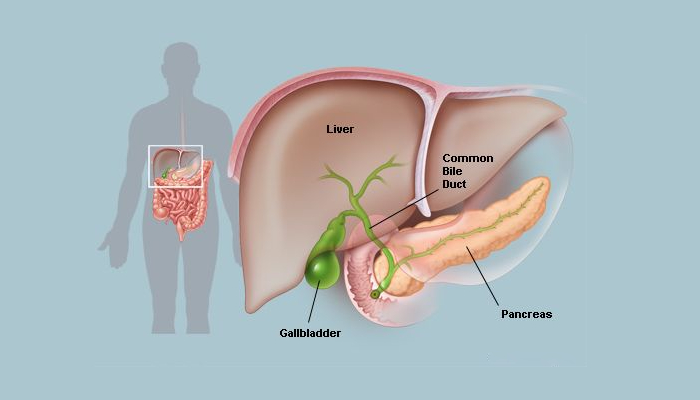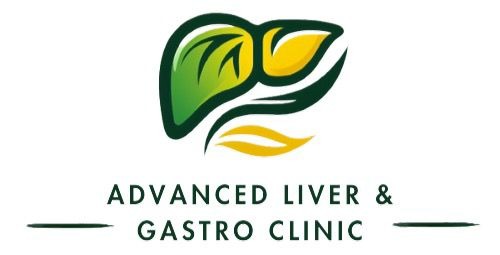Gallbladder Overview
The gallbladder is a small pouch beneath the liver that stores bile, which helps digest fats. Before meals, it fills with bile, and after eating, it releases bile into the small intestine through ducts. While the gallbladder is not essential, its removal usually doesn’t affect digestion, though some may experience mild diarrhea or fat malabsorption.
For gallbladder stone treatment, consult Dr. Ujwal Zambare, the Best Gallstone Specialist Doctor in Pune. Get advanced care for gallbladder stone treatment in Wakad, Pune to prevent complications and ensure optimal digestive health.

Symptoms of a Gallbladder Problem
- Pain The most common symptom of a gallbladder problem is pain. This pain usually occurs in the mid- to upper-right section of your abdomen.
- Nausea and vomiting are common symptoms of all types of gallbladder problems. However, only chronic gallbladder disease may cause digestive problems, such as acid reflux and gas.
- Fever or chills Chills or an unexplained fever may signal that you have an infection. If you have an infection, you need treatment before it worsens and becomes dangerous. The infection can become life-threatening if it spreads to other parts of the body.
- Chronic diarrhea Having more than four bowel movements per day for at least three months may be a sign of chronic gallbladder disease.
- Jaundice Yellow-tinted skin, or jaundice, may be a sign of a block or stone in the common bile duct. The common bile duct is the channel that leads from the gallbladder to the small intestine.
Gallbladder Conditions
- Gallstones (cholelithiasis): For unclear reasons, substances in bile can crystallize in the gallbladder, forming gallstones. Common and usually harmless, gallstones can sometimes cause pain, nausea, or inflammation.
- Cholecystitis: Infection of the gallbladder, often due to a gallstone in the gallbladder. Cholecystitis causes severe pain and fever, and can require surgery when infection continues or recurs.
- Gallbladder cancer: Although rare, cancer can affect the gallbladder. It is difficult to diagnose and usually found at late stages when symptoms appear. Symptoms may resemble those of gallstones.
- Gallstone pancreatitis: An impacted gallstone blocks the ducts that drain the pancreas. Inflammation of the pancreas results, a serious condition.
Gallbladder Tests
- Abdominal ultrasound: a noninvasive test in which a probe on the skin bounces high-frequency sound waves off structures in the belly. Ultrasound is an excellent test for gallstones and to check the gallbladder wall.
- HIDA scan (cholescintigraphy): In this nuclear medicine test, radioactive dye is injected intravenously and is secreted into the bile. Cholecystitis is likely if the scan shows bile doesn’t make it from the liver into the gallbladder.
- Endoscopic retrograde cholangiopancreatography (ERCP): Using a flexible tube inserted through the mouth, through the stomach, and into the small intestine, a doctor can see through the tube and inject dye into the bile system ducts. Tiny surgical tools can be used to treat some gallstone conditions during ERCP.
- Magnetic resonance cholangiopancreatography (MRCP): An MRI scanner provides high-resolution images of the bile ducts, pancreas, and gallbladder. MRCP images help guide further tests and treatments.
- Endoscopic ultrasound: A tiny ultrasound probe on the end of a flexible tube is inserted through the mouth to the intestines. Endoscopic ultrasound can help detect choledocholithiasis and gallstone pancreatitis.
- Abdominal X-ray: Although they may be used to look for other problems in the abdomen, X-rays generally cannot diagnose gallbladder disease. However, X-rays may be able to detect gallstones.
Gallbladder Treatments
- Gallbladder surgery (cholecystectomy): A surgeon removes the gallbladder, using either laparoscopy (several small cuts) or laparotomy (traditional “open” surgery with a larger incision).
- Antibiotics: Infection may be present during cholecystitis. Though antibiotics don’t typically cure cholecystitis, they can prevent an infection from spreading.
- Chemotherapy and radiation therapy: After surgery for gallbladder cancer, chemotherapy and radiation may be used to help prevent cancer from returning.
- Ursodeoxycholic acid: In people with problems from gallstones who are not good candidates for surgery, this oral medicine is an option. Ursodeoxycholic acid may help dissolve small cholesterol gallstones and reduce symptoms. Another oral solution is called chenodiol.
- Extracorporeal shock-wave lithotripsy: High-energy shockwaves are projected from a machine through the abdominal wall, breaking up gallstones. Lithotripsy works best if only a few small gallstones are present.
- Contact solvent dissolution: A needle is inserted through the skin into the gallbladder, and chemicals are injected that dissolve gallstones. This technique is rarely used.
Request A Call Back:
Need expert advice on gallbladder health and stone treatment? Request a call back from Dr. Ujwal Zambare, the Best Gallstone Specialist Doctor in Pune. Get advanced laparoscopic surgery for gallbladder stone treatment in Wakad, Pune. Contact us today for expert consultation and personalized treatment options!
